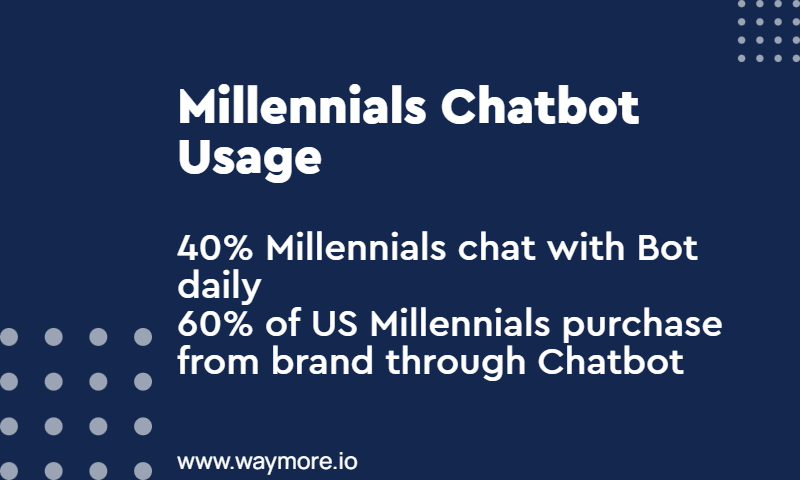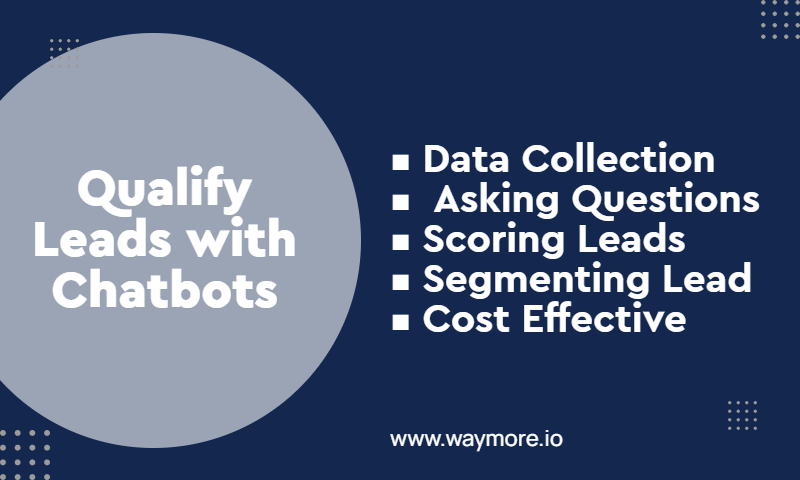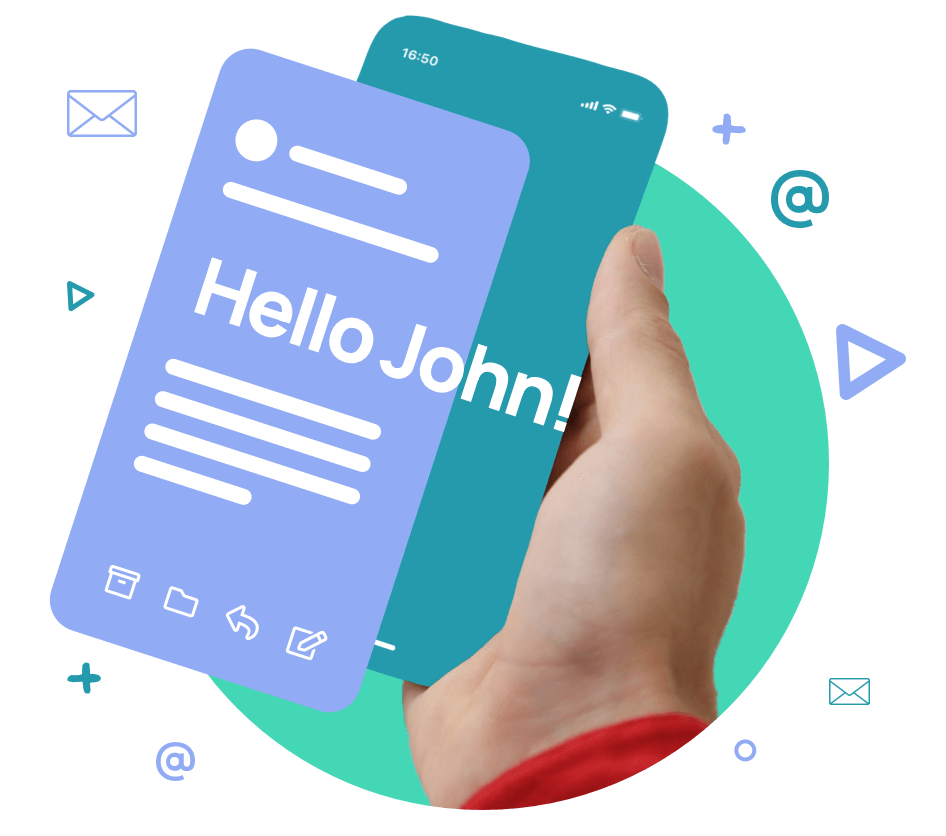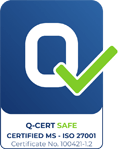Quick Links
What are Lead Generation chatbots?
Lead generation is the process of attracting and converting potential customers into prospects who are interested in your products or services. It is a crucial step in the sales funnel, as it helps you build a pipeline of qualified leads who are more likely to buy from you.
However, lead generation can be challenging and time-consuming, especially in the digital age where customers have more choices and higher expectations. We need to capture their attention, engage them with relevant content, and persuade them to take action, all while competing with other businesses for their attention.
This is where chatbots can help. Chatbots are software applications that use artificial intelligence (AI) to simulate human conversations. They can interact with customers through various channels, such as websites, social media, messaging apps, and email. They can provide instant responses, 24/7 availability, and personalized experiences, making them ideal tools for lead generation.
Normal Chatbots vs Lead Generation Chatbots
Chatbots have become increasingly popular tools for businesses to interact with customers and website visitors. But not all chatbots are created equal. While some focus on providing information and engaging users in conversation, others have the specific goal of generating leads and converting visitors into potential customers.
Purpose
Normal Chatbots: Primarily focused on providing information, answering questions, and offering customer support. They may also entertain or engage users in casual conversation.
Lead Generation Chatbots: Designed to capture leads, qualify prospects, and nurture them towards conversion. Their goal is to collect valuable information about potential customers and move them further down the sales funnel.
Functionality
Normal Chatbots: Can answer a wide range of questions, provide basic information, and offer simple tasks like scheduling appointments or placing orders. They may use pre-programmed responses or basic AI to understand user intent.
Lead Generation Chatbots: Employ more sophisticated AI and machine learning to understand user behavior and preferences. They can ask targeted questions, personalize responses, and qualify leads based on specific criteria. They may also integrate with marketing automation platforms to capture lead data and trigger nurturing sequences.
Benefits
Normal Chatbots: Improve user experience, increase engagement, and reduce customer support costs. They can also provide 24/7 availability and handle multiple conversations simultaneously.
Lead Generation Chatbots: Generate high-quality leads, improve lead qualification, and boost conversion rates. They can save time and resources by automating lead capture and nurturing.

How Chatbots Can Generate Leads
One of the main benefits of chatbots is that they can capture leads at the source, meaning they can engage customers as soon as they visit your website or social media page. This can help you reduce bounce rates, increase conversions, and improve customer satisfaction.
AI Chatbots can capture leads by
- Offering value: Chatbots can offer value to customers by providing useful information, answering common questions, giving recommendations, or offering incentives, such as discounts, coupons, or free trials. For example, a chatbot can offer a free ebook or a webinar in exchange for the customer’s email address.
- Creating curiosity: Chatbots can create curiosity by using catchy headlines, intriguing questions, or interactive quizzes. Greet visitors with a welcoming message, sparking their curiosity and guiding them towards relevant information. Based on browsing behavior, increasing conversion rates by 4x compared to static forms. For example, a chatbot can ask the customer to take a personality test or a trivia quiz and reveal the results after collecting their contact details.
- Building rapport: Chatbots can build rapport by using natural language, humor, emojis, or gifs. They can also use personalization, such as addressing the customer by name, remembering their preferences, or tailoring the conversation based on their behavior. For example, a chatbot can greet the customer with a friendly message, ask them how they are doing, or compliment them on their choice of product.
How Chatbots Can Qualify Potential Customers

Another benefit of ai chatbots is that they can qualify potential customers, meaning they can filter out the leads who are not a good fit for your business and focus on the ones who are most likely to buy from you. This can help you save time, money, and resources, and increase your sales efficiency and effectiveness.
Chatbots can qualify potential customers by:
Asking qualifying questions
Chatbots can ask qualifying questions to determine the customer’s needs, wants, pain points, budget, timeline, decision-making process, or authority. For example, a chatbot can ask the customer what problem they are trying to solve, what features they are looking for, how much they are willing to spend, or when they are planning to buy.
Scoring Leads
Chatbots can score leads based on their responses, behavior, or profile. They can assign different points or weights to different criteria, such as the customer’s interest, urgency, or fit. For example, a chatbot can give more points to a customer who has a high purchase intent, a pressing problem, or a matching profile, and less points to a customer who has a low purchase intent, a vague problem, or a mismatched profile.
Data Collection
Chatbots can seamlessly collect valuable data like email addresses, phone numbers, and interests. This data can be used for targeted marketing campaigns and lead scoring, further optimizing your sales funnel.
Segmenting leads
Chatbots can segment leads based on their scores, categories, or tags. They can group leads into different segments, such as hot, warm, or cold, or based on their industry, location, or persona. For example, a chatbot can segment leads into different stages of the buyer’s journey, such as awareness, consideration, or decision, or based on their product preferences, such as features, benefits, or price.
Cost-Effective
Compared to traditional lead generation methods, chatbots are highly cost-effective. They require minimal setup and maintenance, while generating leads 24/7, ultimately saving you time and money.
How Chatbots Can Nurture Relationships?
A third benefit of chatbots is that they can nurture relationships, meaning they can maintain contact with leads, educate them, and move them along the sales funnel. They can also re-engage leads who have gone cold, or upsell or cross-sell to existing customers. This can help you increase customer loyalty, retention, and lifetime value. Many industries use chatbots for marketing purposes.
Sending follow-ups
Chatbots can send follow-ups to leads via email, SMS, or push notifications. They can send timely, relevant, and personalized messages, such as reminders, confirmations, updates requests. For example, a chatbot can send a follow-up email to a lead who downloaded a free ebook, thanking them for their interest, and offering them more resources or a free consultation.
Providing content
Chatbots can provide content to leads that educates them, informs them, or entertains them. They can provide content that matches the lead’s stage, segment, or score, such as blog posts, case studies, testimonials, or videos. For example, a chatbot can provide a case study to a lead who is in the consideration stage, showing them how your product or service helped a similar customer solve their problem.
Creating urgency
Chatbots can create urgency to leads by using scarcity, exclusivity, or social proof. They can use tactics such as limited-time offers, limited-stock alerts, or customer reviews. For example, a chatbot can create urgency to a lead who is in the decision stage, by offering them a special discount, a free bonus, or a money-back guarantee, if they buy within a certain timeframe.
Gamification and Interactive Experiences
Chatbots can incorporate gamified elements and interactive experiences to make interactions more enjoyable and memorable. This can range from quizzes and polls to personalized challenges and rewards. Imagine a customer service chatbot offering a fun quiz to troubleshoot an issue or a language learning chatbot awarding points for completing lessons – these elements add a layer of fun and motivation, strengthening the connection.
Feedback Collection and Continuous Improvement
Chatbots can collect valuable feedback from users through surveys, polls, and open-ended questions. This feedback helps refine the chatbot’s responses and personalize the user experience further. Imagine a chatbot asking for feedback after an interaction or offering a quick satisfaction survey – this two-way communication loop fosters trust and demonstrates a commitment to improvement.
Tailored Content and Educational Resources
Chatbots can curate content and resources based on user interests and goals. This ensures users receive information that is truly valuable to them, fostering trust and building expertise. Imagine an e-commerce chatbot suggesting products based on past purchases or a news chatbot recommending articles aligned with the user’s preferred topics – a gateway to deeper engagement and learning.
Chatbot Nurture Relationships across Different Industries
E-commerce: Chatbots can recommend products, answer size and fit questions, and offer personalized discounts, creating a more engaging shopping experience.
Education: Provide 24/7 access to answer student questions, provide feedback on assignments, and offer personalized learning resources, enhancing the learning experience and fostering student engagement.
Healthcare: Chatbots can provide appointment scheduling, answer basic medical questions, and offer emotional support, improving patient satisfaction and reducing administrative burden.
Finance: Chatbots can assist with account inquiries, loan applications, and budgeting advice, simplifying financial tasks and building trust with customers.
Customer service: Chatbots can handle basic inquiries, resolve common issues, and escalate complex cases to human representatives, improving resolution times and customer satisfaction.
Best Practices for Chatbot Lead Generation
To make the most of chatbot lead generation, you need to follow some best practices, such as:
Define your goals
You need to define your goals for chatbot AI for lead generation, such as the number of leads, the quality of leads, or the conversion rate of leads. You also need to define your metrics, such as the click-through rate, the response rate, or the retention rate of your chatbot. This will help you measure your performance and optimize your strategy.
Know your audience
You need to know your audience for chatbot lead generation, such as their demographics, psychographics, or behavior. You also need to know their pain points, challenges, goals, or motivations. This will help you create a chatbot that resonates with them, speaks their language, and solves their problems.
Design your conversation
You need to design your conversation for chatbot lead generation, such as the flow, the tone, or the personality of your chatbot. We must need to design your questions, answers, or messages, such as the type, the length, or the format of your chatbot. This will help you create a chatbot that is engaging, interactive, and human-like. Chatbots can automate routine tasks such as answering frequently asked questions, scheduling appointments, and sending follow-up messages.
Test and improve your chatbot
You need to test and improve your chatbot for lead generation. Such as the functionality, the usability, or the accuracy of your chatbot. You can use A/B testing to compare different versions of your chatbot and identify areas for improvement. You also need to test and improve your content. such as the relevance, the value, or the clarity of your chatbot. This will help you create a chatbot that is reliable, user-friendly, and error-free.
Integrate chatbots with CRM
Integrating chatbots with your CRM system can help you track leads, monitor customer interactions, and analyze data. This can help you optimize your chatbot strategy and improve lead generation
Optimize chatbot for mobile
With the increasing use of mobile devices, it’s important to optimize your chatbot for mobile users.
Integrate chatbots with social media
Integrating chatbots with social media platforms such as Facebook Messenger or WhatsApp. They can help you reach a wider audience and generate more leads
Examples of Chatbot Lead Generation
To inspire you, here are some examples of how businesses are using chatbots for lead generation:
E-commerce
Experience the future of online shopping with ecommerce chatbots – Here some example
- Suomalainen Kirjakauppa (Finnish bookstore): Their chatbot recommends books, offers discounts, and collects email addresses for targeted promotions.
- K-Caara (car dealership): The bot answers car-related questions, schedules test drives, and captures leads for sales reps.
Real Estate
- SATO (Finland’s rental housing provider): Their chatbot qualifies leads by asking budget and schedule preferences. They connects them with suitable apartments or sales reps.
- Asuntoyhtymä (property investment): The bot educates visitors about investment opportunities, pre-qualifies leads, and schedules consultations.
Financial Services
- S-Bank (Finnish bank): The chatbot helps users on the website, answers service questions, and collects contact info. For further assistance, making interactions more smoother.
IT Industry
- HubSpot: HubSpot is a software company that offers a suite of tools for marketing, sales, and customer service. Their website utilizes a chatbot for lead generation, providing free resources, qualifying prospects, and scheduling meetings with sales representatives.
Education Industry
- Duolingo: Duolingo is a language learning platform that offers courses in various languages. They utilize an app chatbot to capture leads, provide a free trial, inquire about goals, and tailor a learning plan.
Conclusion
Chatbot AI for Lead Generation is no longer a futuristic concept, but a powerful tool readily available to businesses of all sizes.
Elevate your business with smarter customer interactions.
By capturing, qualifying, and nurturing leads, chatbots can streamline your sales pipeline, boost conversion rates, and ultimately drive business growth. So, embrace the power of AI and watch your lead generation efforts soar to new heights.
If you want to learn more, reach out to the experts at WayMore today.




